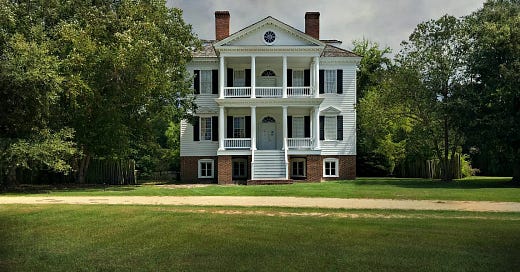The Cornwallis House in Camden, SC is apparently one of many structures named for the British Lord who roamed these parts with his army during the Revolutionary War. For the record, I also know of a Cornwallis House in Winnsboro, SC, Bethania, NC, and one in Wilmington, NC as well. Here is the Camden version of the story.
Cornwallis House in Camden, South Carolina might be better served to call itself Lazarus House. It did, after all, rise from the dead.
Joseph Kershaw came to Camden, South Carolina in 1758 from Yorkshire, England. Actually, there was no "Camden, South Carolina" until Kershaw showed up. He founded the town and named it after British Lord Camden, who was a favorite of American Colonists because he didn't like the way the British were taxing us any more than we did.
Kershaw quickly established himself as a leader, and in short order had helped to build Camden as one of the primary trading hubs of the South Carolina colony.
Things were going swimmingly until another British Lord came to town in the year 1780. His name was Lord Charles Cornwallis, and he not only came to town, he seized it - along with Joseph Kershaw's fine Georgian mansion, which he quickly turned into British Army headquarters for the region.
Following the war (which we won, by the way, in case you're new here), Camden recovered, but Joseph Kershaw and his fortunes never did. He was taken prisoner during the war and sent into exile in British Honduras and later Bermuda.
His reversal of fortune was never rectified, and by the turn of the 19th century, Kershaw and his wife had both passed away.
The house, however, still stood. It took another army in the year 1865 to finish off that last vestige of Kershaw's former glory. Following the use of the place as a storehouse during the Civil War, the Union Army burned it to the ground.
Thanks, however, to several photographs of the house that were taken shortly before it was burned, and also to an archaeological dig in the late 1960's that unearthed the original brick foundation, Kershaw's Georgian mansion was brought back to life in exact detail.
It stands today as the centerpiece of Historic Camden, open to the public, and is the site of annual Revolutionary War reenactments as well as numerous beautiful weddings and other celebrations, a fitting happy ending for a fine old house that refused to die.
Photo by Beth Yarbrough.






The pre antebellum and post antebellum structures are key to understanding Southern heritage. Many thanks for documenting the highs and lows! (Cornwallis being the very lowest).
A gorgeous house. It's British Army/ Yankee Army woes reminds me of a beautiful spot in Beaufort, SC, Sheldon Church. Just ruins now, but still evocative, it was burned by the British Army during the Revolution, rebuilt and then burned again by Union army arsonists. (I asked my wife to marry me in there, 33 years ago.)